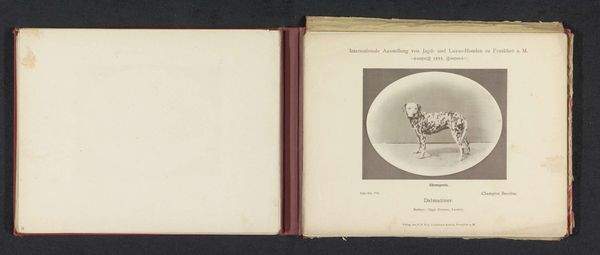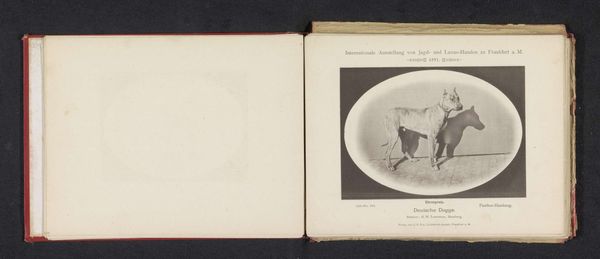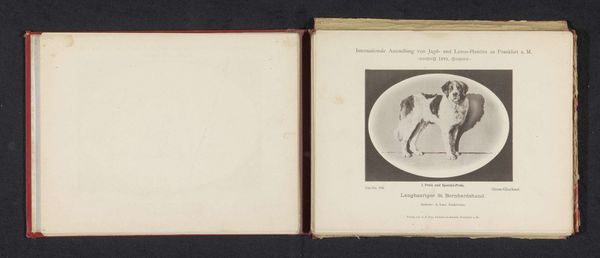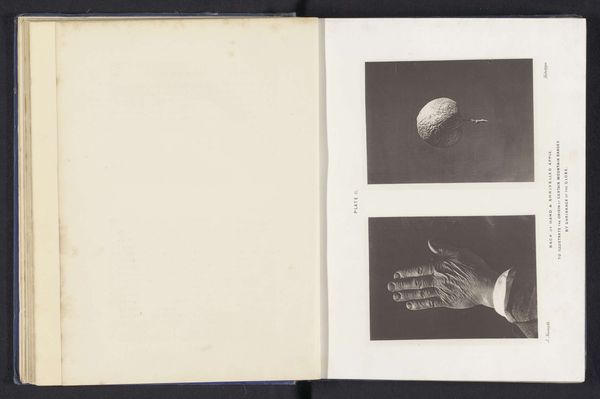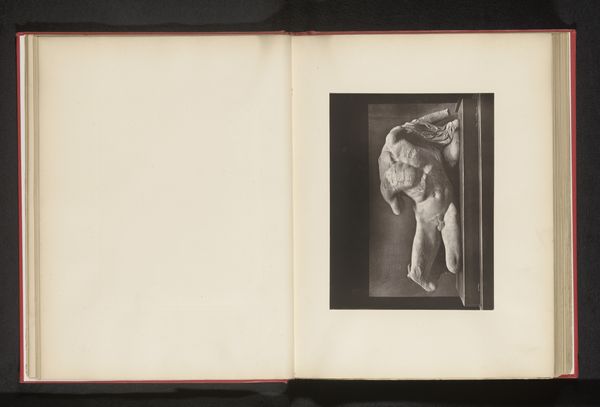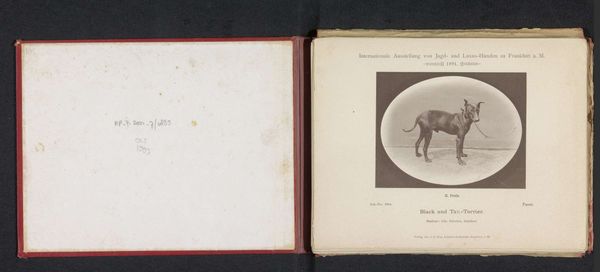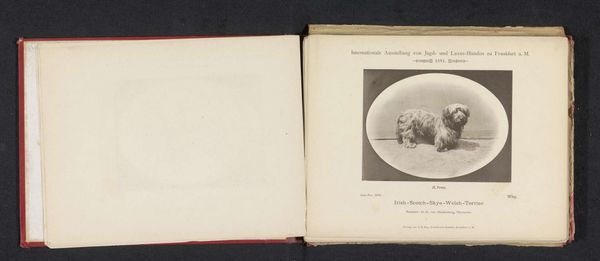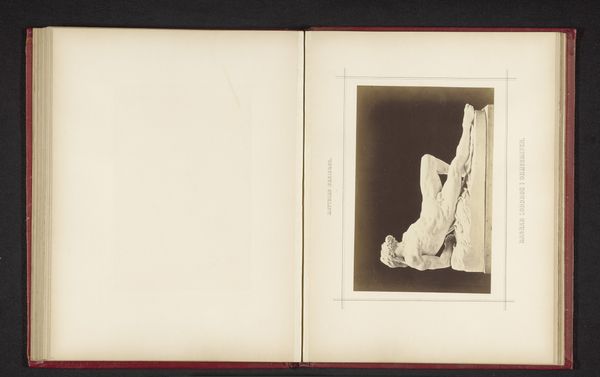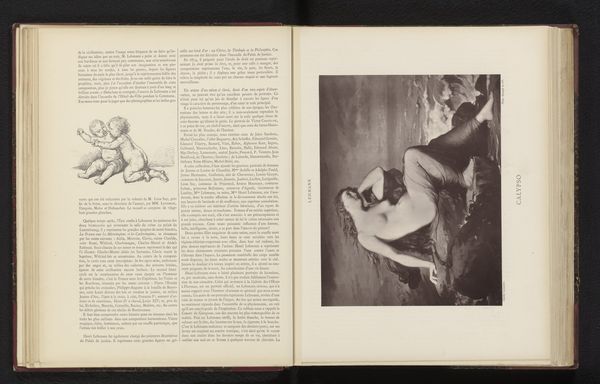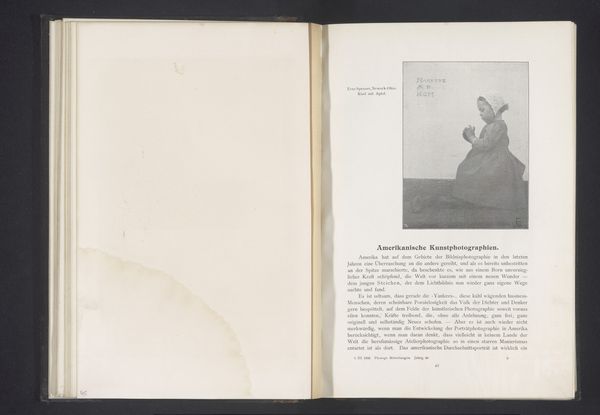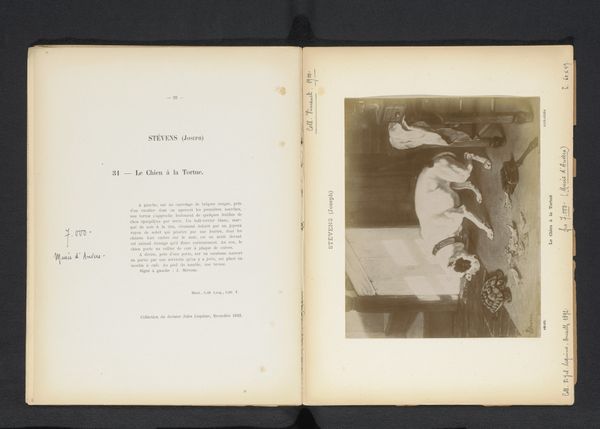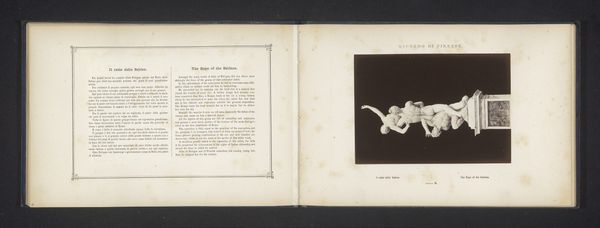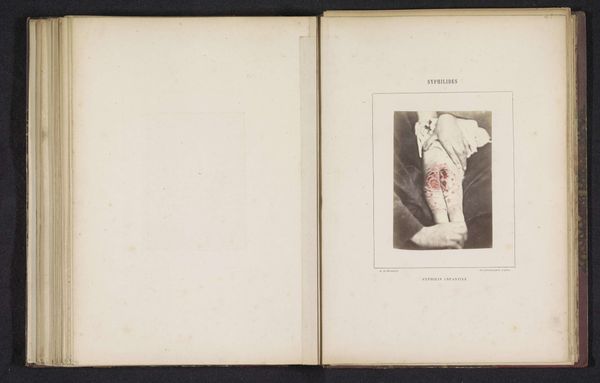
Sint-bernard Erika-Plavia die een tweede prijs heeft gewonnen op de Internationale Ausstellung von Jagd und Luxus Hunden in 1891 1891
0:00
0:00
photography, gelatin-silver-print
#
portrait
#
aged paper
#
animal
#
dog
#
photography
#
coloured pencil
#
stylized text
#
gelatin-silver-print
#
realism
Dimensions: height 122 mm, width 173 mm
Copyright: Rijks Museum: Open Domain
Curator: Here we have a gelatin silver print from 1891 titled "Sint-bernard Erika-Plavia die een tweede prijs heeft gewonnen op de Internationale Ausstellung von Jagd und Luxus Hunden in 1891." Editor: It’s strikingly formal, almost austere. The dog, centered in an oval vignette, possesses such solemnity. There’s an implicit class element, wouldn’t you say? Curator: Absolutely. The "Internationale Ausstellung von Jagd und Luxus Hunden," tells us so much about the socio-cultural context of the period. Dog breeding and shows were undeniably linked to ideas of nationhood, purity of bloodlines, and Victorian ideals of control over the natural world. These weren't just pets; they were symbols. Editor: The photograph itself mimics portraiture conventions we typically see associated with people, echoing notions of power, status, and prestige, doesn't it? By literally centering the dog and presenting it as an ideal specimen of the breed, what social norms or expectations were subtly, or perhaps not so subtly, promoted and reinforced? Curator: I agree. It would be fascinating to consider, through a critical lens, what societal expectations were reinforced. Did ownership of particular breeds, like this prize-winning Saint Bernard, signify a certain social standing? Were there underlying power dynamics at play related to how animals were treated, bred, and showcased? Moreover, who had access to participate in these "luxury" events, and how did these events function to further marginalize those excluded based on race, class, or other social identifiers? Editor: These shows also likely played a key role in defining breeds and solidifying kennel club standards. Photography like this became vital in distributing these standards. But looking closer, isn't there something also a little absurd, even humorous in how seriously we take these pursuits? Curator: There's always humor when deeply embedded social values get brought to the surface. And photography in the late 19th century was rapidly shifting notions of truth and representation, too. This piece encapsulates anxieties about both what is natural and what is real. Editor: Spot on! Well, I definitely came away questioning my preconceived notions about "man's best friend". Thank you! Curator: Likewise, seeing it framed through this intersectional lens sheds a revealing light on power, class, and societal norms that might have gone unnoticed otherwise.
Comments
No comments
Be the first to comment and join the conversation on the ultimate creative platform.
